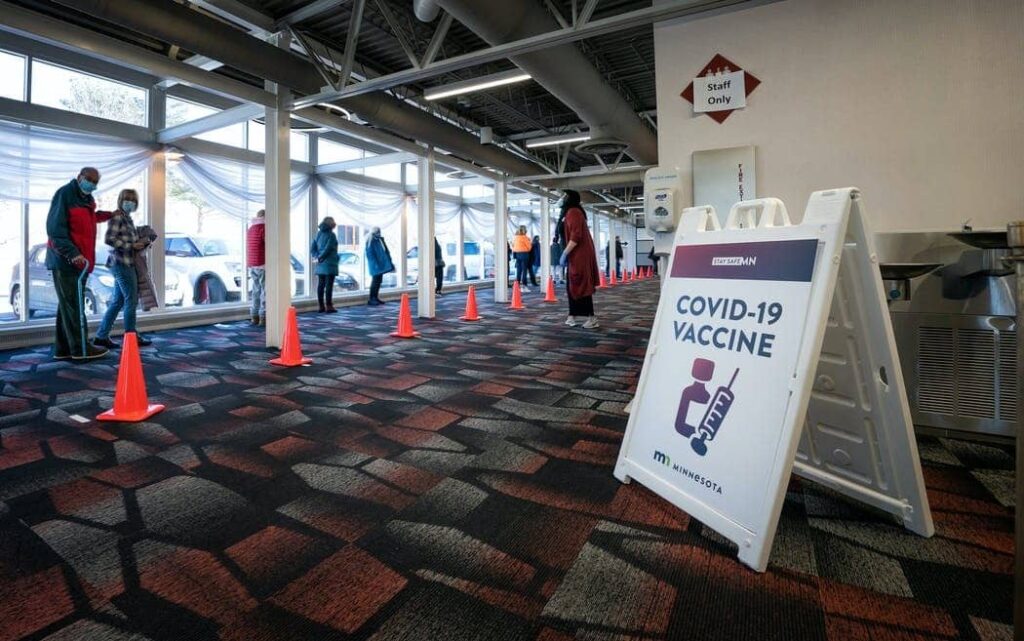
Early in the vaccine rollout, clinic administrators faced two strict requirements:
“Don’t waste a single dose” and at the same time, “Don’t vaccinate anyone outside the approved hierarchy.” By adapting to immediate onsite needs, Primary.Health helped clinics make the most of the available supply to reduce vaccine waste. Vaccine waste can be caused by everything from less-efficient syringes, vaccines not kept cold enough or left out too long, or appointment scheduling problems.
In the Minnesota Department of Health pilot program, vaccine came to nine treatment sites in frozen vials that were thawed, diluted, and then drawn from multidose vials. To be on the safe side, Pfizer manufacturers overfilled the vials, labeling them as containing four doses when they actually contained six. What happened to the extra vaccine depended on the type of syringe the vaccinators used.
Shortage of low dead volume syringes
Along with the vaccines, clinics also received kits from the Centers for Disease Control and Prevention (CDC) for diluting and administering the vaccine. The kits included two types of syringes— standard and low dead volume (LDV). Low dead space syringes minimize the area between the bottom of the plunger and the top of the needle, so less vaccine goes to waste.1
Primary.Health staff found that, depending on the mix of syringes provided in the kits, there could be as much as 20% variance in the number of shots a facility could give on any given day. To maximize the number of available doses and reduce vaccine waste, we worked with a local provider to secure LDV syringes from sources outside the CDC supply chain.
Short vaccine viability time
Once vaccine is thawed, it has a short viability time—only six hours at room temperature—before doses have to be discarded. At times, clinics would end up with unused vaccine.
One weekend at a Minnesota clinic, the staff discovered extra thawed vials after the vaccine event shut down. So we organized a popup clinic the same day and arranged to vaccinate 140 local childcare workers. We streamlined the registration process for the group so they could quickly get back to work. The popup clinic helped to reduce vaccine waste.
Targeted notifications
One scheduling issue we faced was how to get eligible people to the clinic sites at the right time. When we had extra vaccine, we turned to a targeted wait list of pre-registered people, and then quickly sent text SMS notifications to people who lived near the site. We also generated a rapid call list that clinic staff and our team used to reach out to people to say, “You’re scheduled for tomorrow. Can you come in today, within 30 minutes?”
Our next step was to customize our software to track in real time the shifting numbers of doses from vials, and then allocate the right amount of space on the calendar for appointments that day. Our software allowed us to react to developing situations in the moment.
Overall, the combination of higher vaccine yield and Primary.Health’s advanced software functionality made a difference of up to 2,000 more participants per week, over many weeks.
1Wall Street Covid-19 Vaccines Are Wasted as Special Syringes Run Short, Austen Jufford and Jared S. Hopkins, May 7, 2021, https://www.wsj.com/articles/covid-19-vaccines-are-wasted-as-special-syringes-run-short-11620379801
About Primary.Health
One of the things that makes Primary.Health exceptional is how adept the company is at adapting to user needs. CEO Andrew Kobylinski explained, “It’s about puzzling together the pieces for an effective program. In Minnesota, that included everything from sourcing tent vendors to training onsite staff on how to run the clinical and logistical components. At first, we did a lot of the physical work to get the program off the ground, but as the effort progressed, they were able to take over the clinical end so we could focus on the digital support.”
Kobylinski said, “Our designers and coders are coding for real-world uses where needs can change from day to day. The products aren’t necessarily pretty, but they are highly functional for what people need to do. Throughout the pandemic, our engineers and product managers worked the testing sites and vaccine clinics, so they have not only the digital capabilities but also the operational experience to make things work.”
